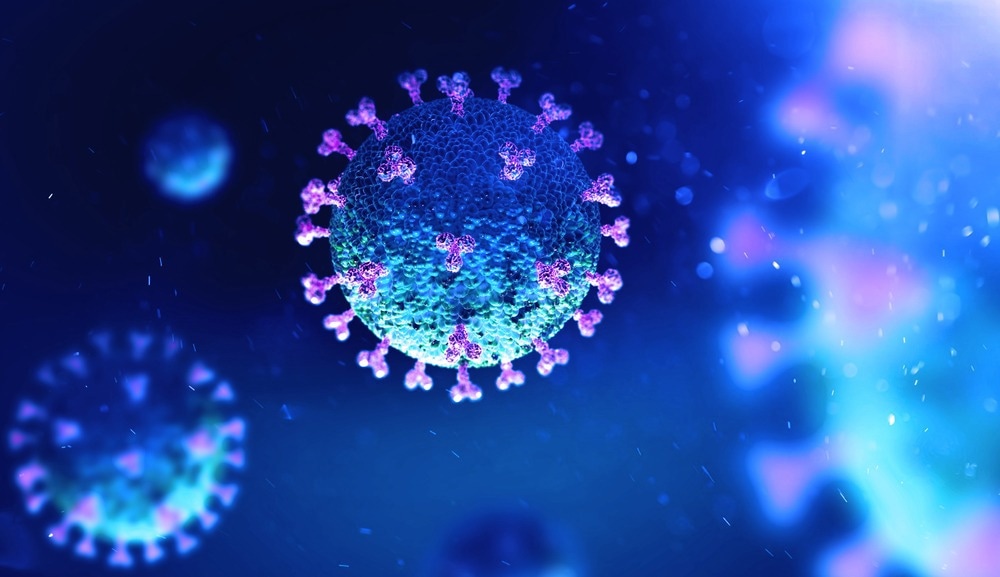In a recent study published in Nature Biomedical Engineering, researchers used an interdisciplinary approach incorporating phylogenetics, 3D protein modeling, and plasmid design to identify and computationally design an antigen representing the core of most currently known sarbecoviruses.
 Study: A computationally designed antigen eliciting broad humoral responses against SARS-CoV-2 and related sarbecoviruses. Image Credit: Andrii Vodolazhskyi/Shutterstock.com
Study: A computationally designed antigen eliciting broad humoral responses against SARS-CoV-2 and related sarbecoviruses. Image Credit: Andrii Vodolazhskyi/Shutterstock.com
This single antigen was used to develop a novel class of vaccines with efficacy against a wide range of these pathogens, including severe acute respiratory syndrome coronavirus (SARS-CoV)-1, SARS-CoV-2, WIV16, and RaTG13, confirmed via in vitro immunological testing on mice, guinea pigs, and rabbits. This research may form the basis for next-generation vaccines capable of treating sarbecovirus outbreaks early in their course without suffering from efficacy loss due to the rapid evolution of these diseases.
About the study
In the present study, researchers used the cutting-edge digitally immune-optimized synthetic vaccine (DIOSynVax) technology to computationally develop immune-optimized engineered antigens capable of binding to the core regions of sarbecovirus spike proteins. This binding pattern makes these novel antigens immune to mutations in the RBDs, allowing vaccines to trigger immune responses across a whole range of SARS-CoV-2-related pathogens.
Researchers began by acquiring and compiling phylogenetic sequences from all known human and animal Sarbecovirus sequences from the National Center for Biotechnology Information (NCBI) virus database. Based on ACE-2 receptor interaction, two main clades were identified in their analysis - clade 1 viruses that do not interact with the receptor, and clade 2 that do. They focus on the hCoV-19/Wuhan/IVDC-HB-01/2019 strain of SARS-CoV-2 (clade 2) for future antigen development.
Researchers used the phylogenetic analyses to computationally design an optimized core sequence (T2_13) representative of all clade 2 virus genomes.
Borrowing from previous research that characterized early virus variants, researchers modified the T2_13 model to represent the S309, CR3022, and B38 epitopes (T2_14, T2_15, and T2_16, respectively). Since B38 is highly divergent, researchers further modified the epitope via glycosylation to produce T2_17 and T2_18. The BUILD model of the FoldX algorithm was used to evaluate the structural stability of these designed antigens in silico.
For antigen selection and immunogenicity confirmation, researchers used in vivo screening of Bagg albino laboratory (BALB/c) mice infected with SARS-CoV-2 RBD (hCoV-19/Wuhan/IVDC-HB-01/2019) as a DNA immunogen. Flow cytometry was used to confirm the cross-reactivity of the designed antigens against spike proteins representative of SAR-CoV-1, SARS-CoV-2, SARS-like coronavirus WIV16, and bat coronavirus RaTG13. Sera from all antigen-immunized mice depicted significantly higher binding than control mice, confirming the cross-reactivity of the designed antigens.
T2_17 consistently depicted the highest or second-highest binding across pathogens and was hence chosen as the lead candidate in vaccine development. These results were corroborated via enzyme-linked immunosorbent assay (ELISA) wherein T2_17 elicited mice to develop antibodies that showed significant binding to both SARS-CoV RBD and SARS-CoV-2 RBD.
To reduce bias and confirm that binding was not a byproduct of BALB/c mice physiology, these analyses were repeated in outbred guinea pigs using pseudoviruses expressing full-length spike proteins of SARS-CoV and SARS-CoV-2. Results of T2_17 binding were in concordance with those seen in murine models, confirming T2_17 as a candidate capable of binding irrespective of viral strain or mammalian host.
Finally, researchers conducted challenge studies in homozygous K18-hACE-2 transgenic mice. Since most of the human population has been exposed to SARS viruses either via direct environmental contact or vaccination drives against coronavirus disease 2019 (COVID-19), researchers tested the potential of T2_17 as a booster vaccine rather than a prime vaccine. Homozygous K18-hACE-2 transgenic mice were first primed with AZD1222 (ChAdOx1 nCoV-19), the licensed vaccine most commonly used in COVID-19 vaccination globally.
The T2_17 MVA boosted group depicted neutralizing antibodies against SARS-CoV, SARS-CoV-2, and the Delta VOC, confirming its use as a booster. To verify the long-term efficacy of the antigen, a follow-up longitudinal serology study was conducted. A separate group of K18-hACE-2 mice was primed with the AZD1222 vaccine and boosted with T2_17 20 weeks later versus controls that did not receive the booster. Significantly higher antibody titers were observed for the T2_17(MVA) primed group compared to the control by four weeks following booster administration, with antibodies maintained for up to 44 weeks.
Immunogenicity experiments in mice (BALB/c), guinea pigs, and rabbits showed that animals that had received the T2_17 vaccine were able to produce antibodies that neutralized a wide panel of SARS-CoV-2 VOCs, namely Alpha, Beta, Gamma, Delta, and Omicron BA.1.
Conclusions
In the present study, researchers developed a synthetic antigen ‘T2_17’ capable of binding to the core RBD of a broad spectrum of SARS-like coronaviruses. The results suggest that the computationally generated antigen showed good efficacy as a booster virus against Alpha, Beta, Gamma, Delta, and Omicron BA.1 variants of SARS-CoV-2 while also being effective in neutralizing SARS-CoV-1, SARS-like coronavirus WIV16, and bat coronavirus RaTG13.
These results were confirmed both in vitro and in vivo using mice, guinea pigs, and rabbit model systems. The antibodies produced in these animal models were observed to show significantly improved binding compared to conventional vaccines, with neutralizing antibodies persisting at high titers for up to 44 weeks post-immunization.